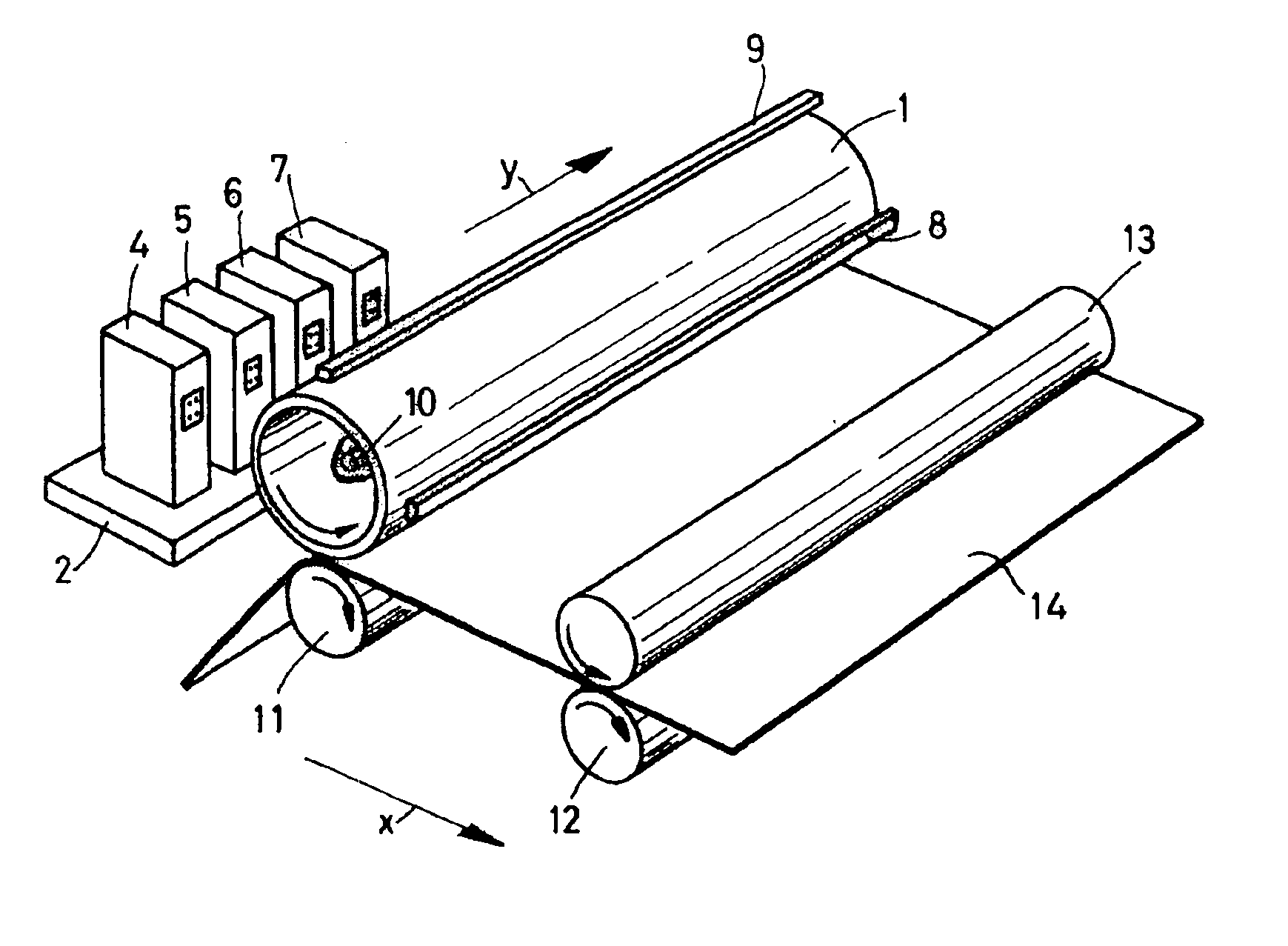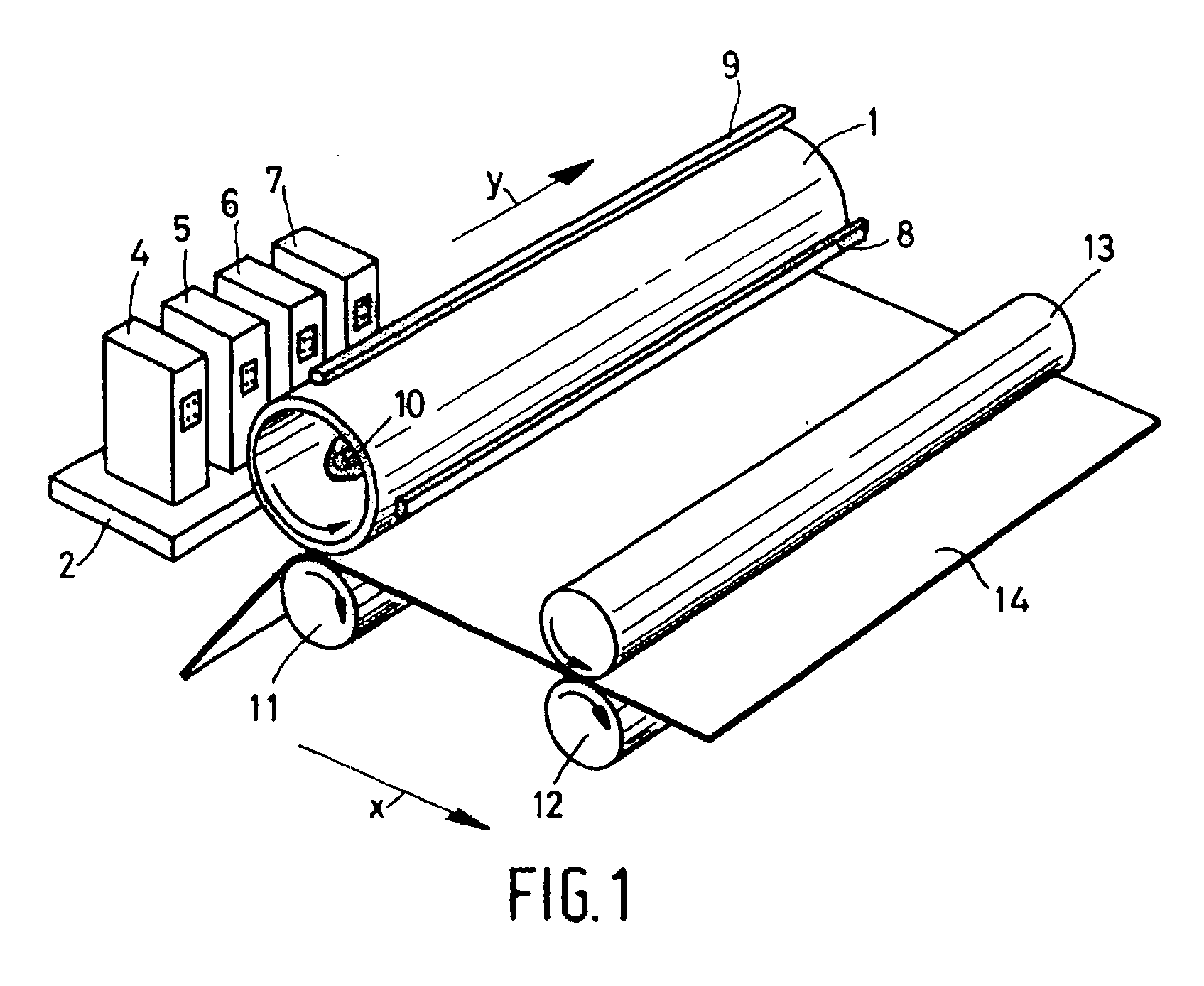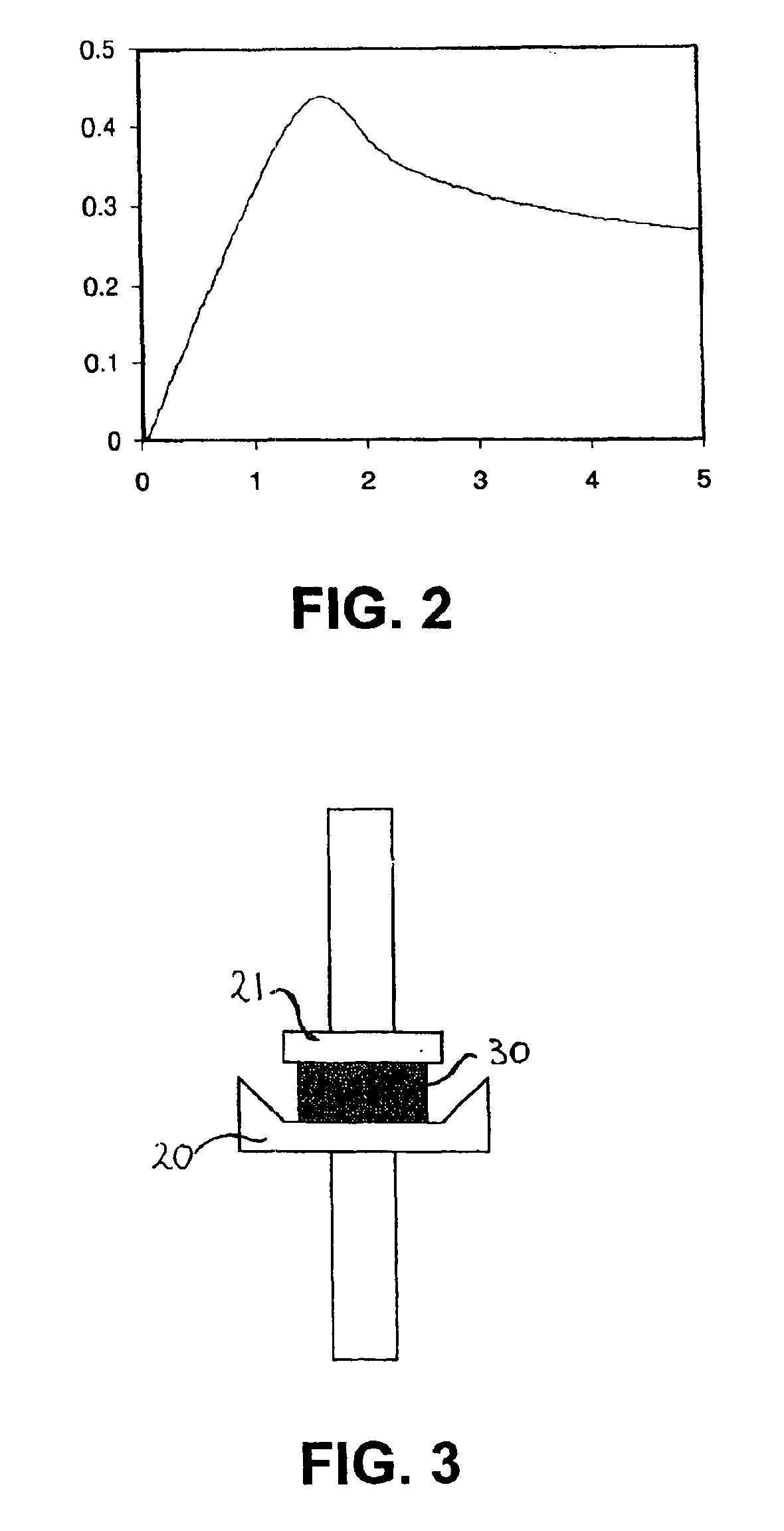Method of printing a receiving material with hot melt ink and an inkjet printer suitable for applying such a method
a technology of hot melt ink and receiving material, which is applied in the direction of printing, measurement devices, instruments, etc., can solve the problems of inability to form a uniform nip, noticeable decline in transfer yield, and inability to print uniformly, so as to improve printing properties, reduce surface tension, and improve printing
- Summary
- Abstract
- Description
- Claims
- Application Information
AI Technical Summary
Benefits of technology
Problems solved by technology
Method used
Image
Examples
example 2
[0029]The hardness in Shore A can be determined as described in ASTM Standard D 2240 of 1991.
example 3
[0030]Example 3 indicates how the thermal conductivity coefficient of an elastomer can be determined. The thermal conductivity is a measure of the heat flow through a material of a specific thickness as a result of a specific temperature difference over the material. This thermal conductivity can be measured using the Holometrix c-matic TCA 200. A sample of the material under investigation is made prior to the measurement. This sample is round with a diameter of 50 to 52 mm and has a thickness of between 6 and 12 mm. For a reliable measurement, the sample must have plain-parallelism such that there are no thickness differences of more than 0.1 mm. For an accurate determination of the thermal conductivity, the thickness of the sample must be known with an accuracy of 0.05 mm. For this purpose the thickness meter such as the Peacock model H can be used.
[0031]To obtain good contact between the sample and the two heat transmission plates of the TCA 200 the sample is provided with a thin...
example 4
[0033]This example indicates how the ink absorption of an elastomer can be determined. For this purpose, a sample of the elastomer for measurement is used with a thickness of about 2 mm and a surface area (in elevation) of 5.4 cm2. This sample is immersed in the relevant ink, which is maintained at 10° C. above its melting temperature. The relative increase in weight of the sample over time is determined by removing the sample from the ink at specific times, cleaning the surface and weighing the sample. As soon as there is no further weight increase (typically after 10-100 hours) the test is concluded. The final relative weight increase in percent is termed the ink absorption.
[0034]It has been found that elastomers usable in the method according to the present invention have an ink absorption lower than 10%. At higher ink absorption the transfer yield at the top limit (see Example 6 for the definition of the top limit) decreases noticeably and a relatively considerable amount of ink...
PUM
 Login to View More
Login to View More Abstract
Description
Claims
Application Information
 Login to View More
Login to View More - R&D
- Intellectual Property
- Life Sciences
- Materials
- Tech Scout
- Unparalleled Data Quality
- Higher Quality Content
- 60% Fewer Hallucinations
Browse by: Latest US Patents, China's latest patents, Technical Efficacy Thesaurus, Application Domain, Technology Topic, Popular Technical Reports.
© 2025 PatSnap. All rights reserved.Legal|Privacy policy|Modern Slavery Act Transparency Statement|Sitemap|About US| Contact US: help@patsnap.com



